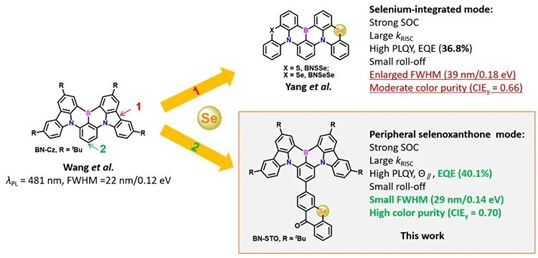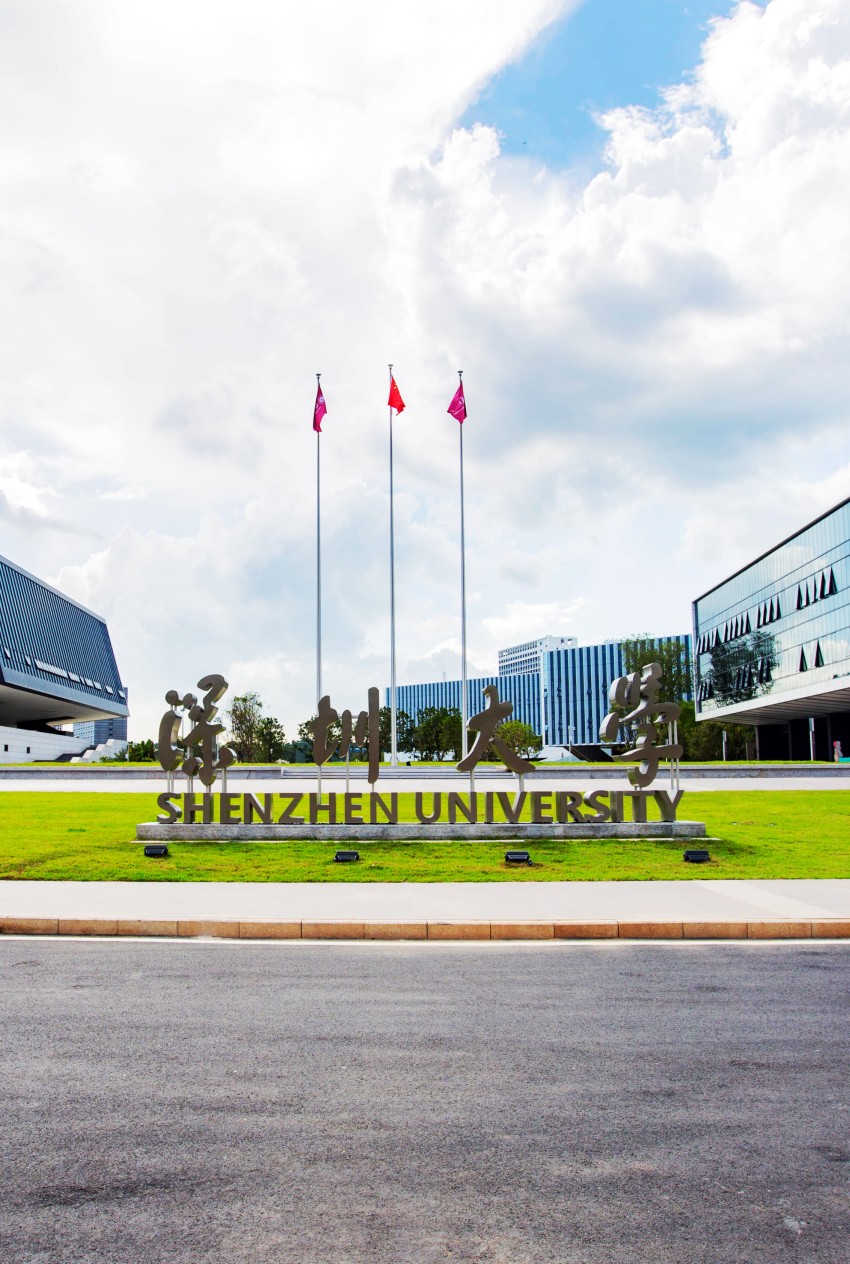Multi-resonance (MR) thermally activated delayed fluorescence (TADF) materials, due to their low structural relaxation, have a very narrow emission spectrum, offering the potential to meet the wide color gamut requirements for ultra-high-definition displays. However, these materials typically have slower reverse intersystem crossing rates (kRISC), meaning up conversion process of triplet excitons is slow, leading to severe efficiency roll-off in organic light-emitting devices (OLEDs) at high brightness.The key to addressing this issue lies in promoting kRISC. Recently, Professor Yang Chuluo's team at Shenzhen University reported an effective method in which selenium (Se) atoms were embedded into the MR-TADF framework. This approach enhanced the spin-orbital coupling (SOC) between the singlet and triplet states by utilizing the heavy atom effect, significantly promoting the reverse intersystem crossing process (with kRISCas high as 2.0 × 106s-1). This breakthrough allowed the construction of highly efficient OLEDs with minimal efficiency roll-off (Nat. Photon., 2022, 16, 803-810).

However, a drawback of directly embedding Se atoms into the MR-TADF framework is that it can lead to increased structural relaxation of the molecules, thereby extending full width at half maximum (FWHMs). To address this issue, Professor Yang Chuluo's team employed a peripheral heavy atom modification strategy. They connected heavy-atom-integrated selenoxanthone moiety to the periphery of the MR-TADF framework via a single bond, leading to the synthesis of a pure green-emitting material called BN-STO. This material combines the advantages of high color purity and a rapid reverse intersystem crossing process. The organic light-emitting diode device based on BN-STO exhibited state-of-the-art performance with a maximum external quantum efficiency (EQE) of 40.1% and maintains a close to 30% a brightness of 1000 cd m-2, with CIE color coordinates of (0.19, 0.70), which closely matches the pure green light standard (0.21, 0.71) set by the National Television System Committee (NTSC). This work was recently published in Angewandte Chemie International Edition
